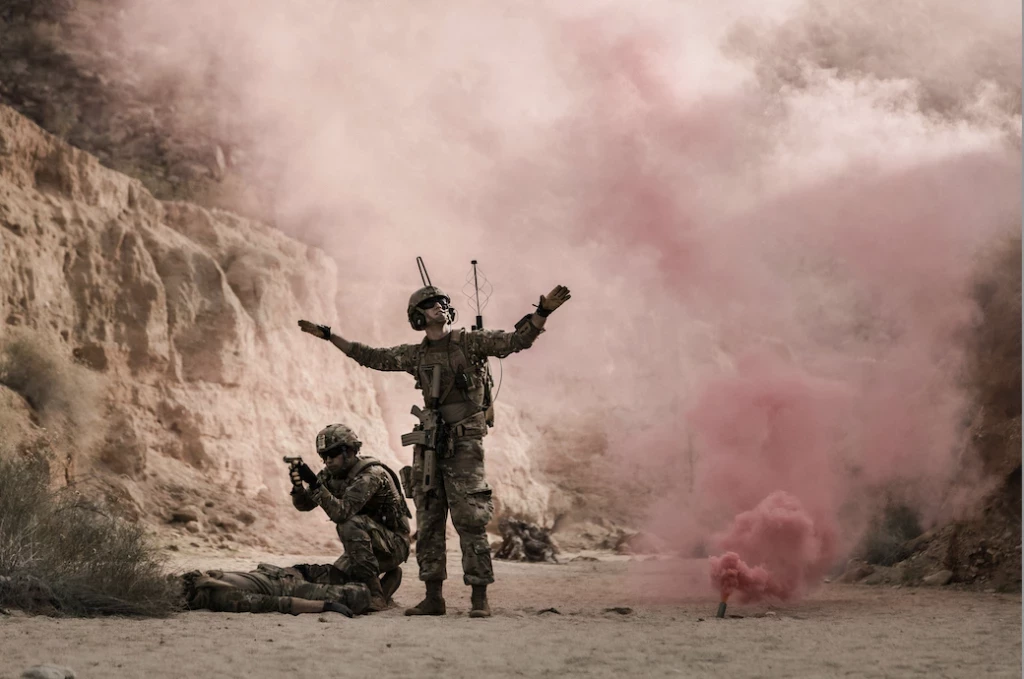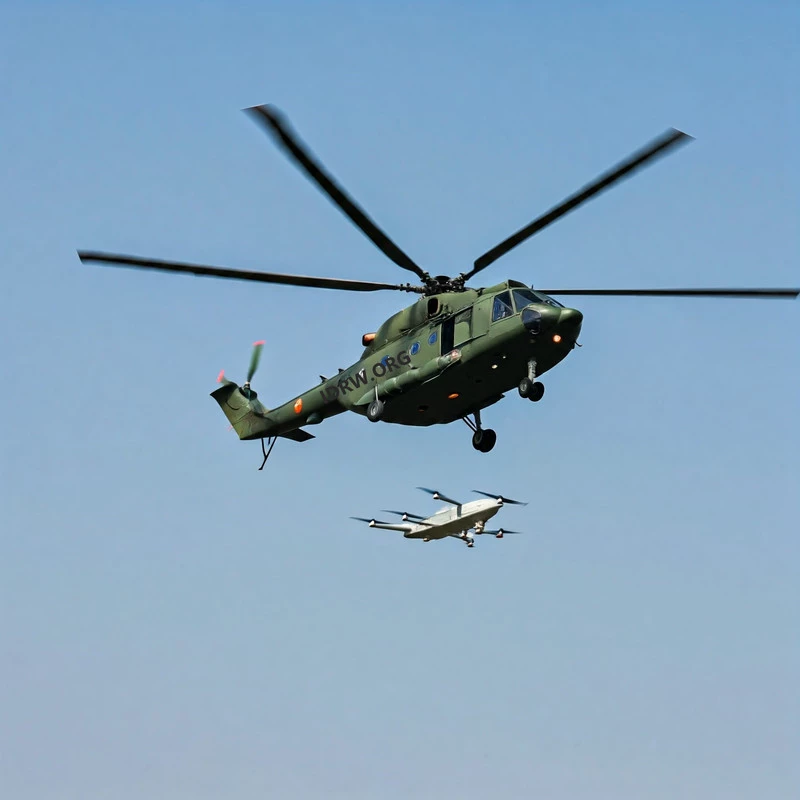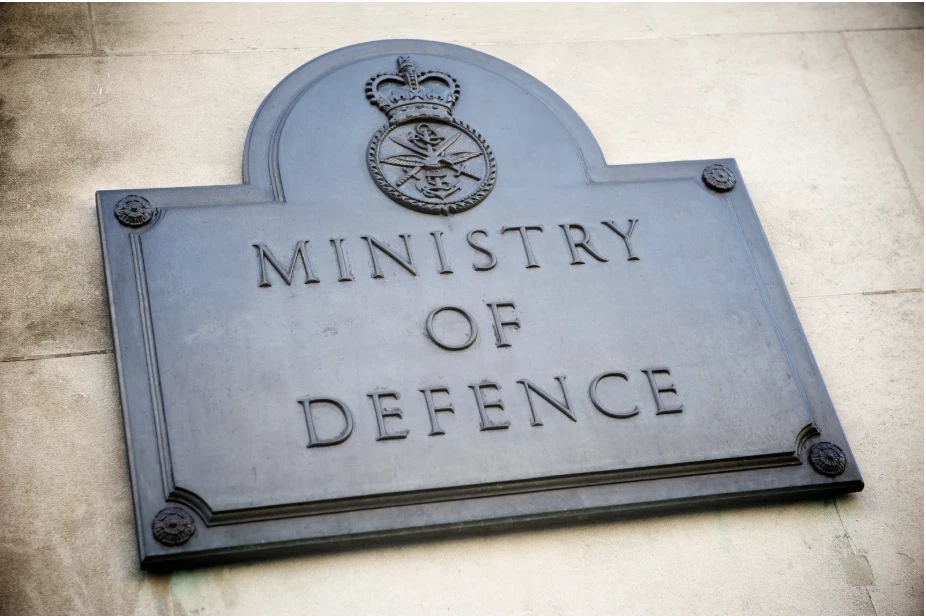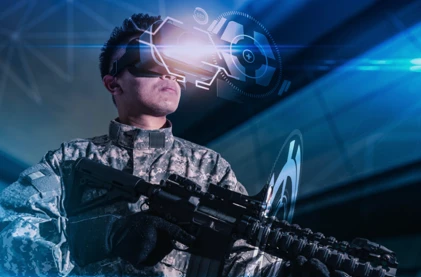How Synthetic Blood Could Transform Military Healthcare in Future Conflicts
Add bookmark
The Need for Innovation in Military Healthcare
Military healthcare is under pressure: modern conflict and battlespaces are not as they once were. Militaries are facing urban operations, scattered battlefields and complex environments where quick evacuation of injured soldiers is not always feasible. When contending with these conditions, it is no surprise that providing efficient healthcare presents a significant challenge – especially when it comes to blood supply. Traditionally, blood transfusions have relied on supplies that must be transported carefully and kept cold – this is hard to manage during frontline or long-term field medical situations.
Ukraine has taught us that blood solutions are vital to saving lives at the point of injury. So, with defence medical services seeking to strengthen resilience and readiness, one question is gaining increasing attention: could synthetic blood be the breakthrough that transforms military healthcare and ensures lifesaving care remains consistently accessible?
Understanding Synthetic Blood - What It Is and How It Works
Synthetic blood (otherwise known as oxygen therapeutics or artificial oxygen carriers) has been designed to mimic the oxygen-transporting role of human blood without the need for whole red blood cells. Currently, there are two main types of synthetic blood being developed. The first is called haemoglobin-based oxygen carriers (HBOCs), and it uses natural or modified haemoglobin (which is the protein in red blood cells that carries oxygen). The second is known as perfluorocarbon emulsions - this is made from man-made fluorocarbon liquids that can dissolve and transport oxygen throughout the body.
The core purpose of synthetic blood is straightforward: it aims to deliver oxygen to tissues when donated blood is unavailable or unsuitable. Unlike red cells, these substitutes can bypass the need for antigen matching and can remain stable outside cold storage. For example, HBOCs do not require cross-matching (the process of testing donor and recipient blood for compatibility) and some can be stored at ambient temperatures, therefore improving readiness for field use.[1]
Notable prototypes already exist. Hemopure (which is a polymerized bovine haemoglobin product) has both a shelf life of up to three years and ambient temperature stability. It’s currently being used clinically in parts of South Africa and Russia.[2] There are other programmes too, such as PolyHeme (now inactive) and novel encapsulated HBOCs, which have been trialled to assess their safety and performance.[3]
It's worth highlighting that synthetic blood is not yet a mature or universally approved therapy - that being said, momentum is certainly strong. New advances in nanotechnology, polymer chemistry and bioengineering are helping to make these products more stable, better at carrying oxygen, and safer for the body, bringing them closer to use in the real world.[4]
Why Synthetic Blood Matters in Military Healthcare
In remote military environments, synthetic blood has the power to significantly ease logistical burdens. Unlike donated blood, some artificial oxygen carriers stay stable at room temperature and don’t need refrigeration – this means supplies can reach the frontline medics more rapidly.[5]
During the ‘golden hour’ (this being the first 60 minutes after traumatic injury when survival odds are highest) every second counts. Synthetic oxygen therapeutics could allow medics to perform quick transfusions in the field when standard blood is not available, buying crucial time before evacuation or surgery. When evacuation takes a long time and medics need to care for patients in the field, synthetic blood could help supply oxygen directly to tissues and prevent further damage that has been caused by oxygen deprivation (known as secondary ischemic injury).
Furthermore, during the actual evacuation process, medics in the ambulances, helicopters or ground vehicles could carry compact synthetic blood kits to maintain oxygenation during transit. In forward and prehospital settings, these tools would help medics treat wounded soldiers straight after injury – a significant advantage in remote or hard-to-access areas.[6]
Defence research initiatives, such as DARPA’s and GOLDEVAC, are already exploring systems that sustain resuscitation and oxygenation from the point of injury through to evacuation. This represents positive steps towards the potential operational role for synthetic blood in future combat casualty care.[7]
Production and Supply Challenges
As discussed, synthetic blood is still an experimental technology – one that continues to face significant hurdles. For example, research by Dr. Abdu I. Alayash, Chief of the FDA’s Laboratory of Biochemistry and Vascular Biology, highlights how some early haemoglobin-based oxygen carrier formulations caused toxicity, blood vessel reactions, and short circulation times. This was mainly because free haemoglobin molecules reacted with nitric oxide and created oxidative stress, which affected how the blood vessels functioned.[8]
Scaling manufacturing is another major constraint. This is because complex biochemical purification, protein engineering, sterile production facilities and quality control collectively make large-scale manufacturing costly and technically demanding.[9] For example, Hemopure is currently approved only in a few counties and has yet to reach mass global distribution.[10]
Regulatory and approval pathways also present additional challenges. This is understandable, as HBOCs differ fundamentally from conventional blood products, they must pass stringent safety trials to meet the requirements of agencies such as the FDA and eventually satisfy both civilian and military medical standards.[11]
Synthetic Blood and the Future of Integrated Military Healthcare Systems
Regardless of the challenges, armed forces are actively pushing to integrate novel medical solutions, and synthetic blood could indeed become a key part of that. It will be important for synthetic blood to mesh seamlessly within the operational patient care pathway (which is from point of injury, through en route care, to hospital-based treatment) rather than exist in isolated programmes, ensuring continuity of care in situations where traditional blood transfusions are not possible.
In joint civilian-military operations, such as humanitarian crisis or large-scale emergencies, synthetic oxygen carriers could play a dual role and strengthen cooperation across trauma care systems. Drones already deliver conventional blood to remote hospitals, and similar technology could transport synthetic blood to frontline medics in both combat and disaster zones. Autonomous UAVs are even being tested for future military blood supply missions.[12]
Furthermore, synthetic blood will bring both new challenges and opportunities for military healthcare. For example, medics will require clear training and guidelines on how to administer these products and supply chains will need to become more high-tech – using digital tools to predict demand and track deliveries in real time. In the future, drones (including fixed-wing and vertical take-off models) could be used to deliver synthetic blood to remote or high-risk areas where regular transport is not possible.[13]
Final Thoughts
Synthetic blood represents a promising frontier in modern military healthcare. If healthcare services achieve successful implementation, it could mark a major breakthrough for sustaining life in remote and high-threat environments. Naturally, challenges remain, as with any emerging technology. However, its development reflects an exciting transition towards smarter systems of care that can make a huge difference on the battlefield.
This topic will be explored in detail at the Deployed Medical & Healthcare Delivery Conference. The DMHD conference offers an incredible opportunity to learn from leading experts in this field, as well as exchange insights and network with professionals driving progress.
Join us at Deployed Medical & Healthcare Delivery 2026 and find out more!

Join us at Deployed Medical & Healthcare Delivery 2026 - Europe’s premier conference dedicated to advancing deployed medical support. Taking place at The Minster Building, London, on 24–25 March 2026, this year’s event will tackle the challenges of delivering effective medical care in collective defence, explore lessons from current conflicts, and highlight innovations shaping the future of combat medicine and mass casualty response.
Learn MoreReferences
[1] “Blood Substitutes,” ScienceDirect, Elsevier. https://www.sciencedirect.com/science/article/abs/pii/B9780444537171017303. Accessed October 13, 2025.
[2] “Hemopure,” National Center for Biotechnology Information (NCBI), PubMed Central. https://pmc.ncbi.nlm.nih.gov/articles/PMC9962799/. Accessed October 14, 2025.
[3] “Blood Substitute Development,” PubMed Central (PMC). https://pmc.ncbi.nlm.nih.gov/articles/PMC2322929/. Accessed October 15, 2025.
[4] “Advances in Artificial Blood Research,” ScienceDirect. https://www.sciencedirect.com/science/article/pii/S2590183425000158. Accessed October 16, 2025.
[5] “Recent Progress in Hemoglobin-Based Oxygen Carriers,” PubMed Central (PMC). https://pmc.ncbi.nlm.nih.gov/articles/PMC9344254/. Accessed October 17, 2025.
[6] “Nanotechnology in Blood Substitutes,” SpringerLink. https://link.springer.com/article/10.1007/s40719-025-00284-4. Accessed October 14, 2025.
[7] “Golden Hour Combat Care,” Defense Advanced Research Projects Agency (DARPA). https://www.darpa.mil/news/2024/golden-hour-combat-care. Accessed October 15, 2025.
[8] “Evaluating the Safety and Efficacy of Hemoglobin-Based Blood Substitutes,” U.S. Food and Drug Administration (FDA). https://www.fda.gov/vaccines-blood-biologics/science-research-biologics/evaluating-safety-and-efficacy-hemoglobin-based-blood-substitutes. Accessed October 16, 2025.
[9] “Advanced Functional Materials: Artificial Oxygen Carriers,” Wiley Online Library. https://advanced.onlinelibrary.wiley.com/doi/10.1002/adfm.202315879. Accessed October 17, 2025.
[10] “Artificial Blood and Oxygen Transport Research,” PubMed Central (PMC). https://pmc.ncbi.nlm.nih.gov/articles/PMC7086064/. Accessed October 13, 2025.
[11] “FDA Comparison: Characteristics of Hemoglobin-Based Oxygen Carriers Could Guide Development of Safe and Effective Products,” U.S. Food and Drug Administration (FDA). https://www.fda.gov/vaccines-blood-biologics/science-research-biologics/fda-comparison-characteristics-hemoglobin-based-oxygen-carriers-could-guide-development-safe-and. Accessed October 14, 2025.
[12] “Evaluation of Military Medical Readiness,” RAND Corporation. https://www.rand.org/pubs/research_reports/RR3047.html. Accessed October 15, 2025.
[13] “PC22 Experiments with New Medical Technology for the Battlefield,” U.S. Army. https://www.army.mil/article/262022/pc22_experiments_with_new_medical_technology_for_the_battlefield. Accessed October 16, 2025.



























